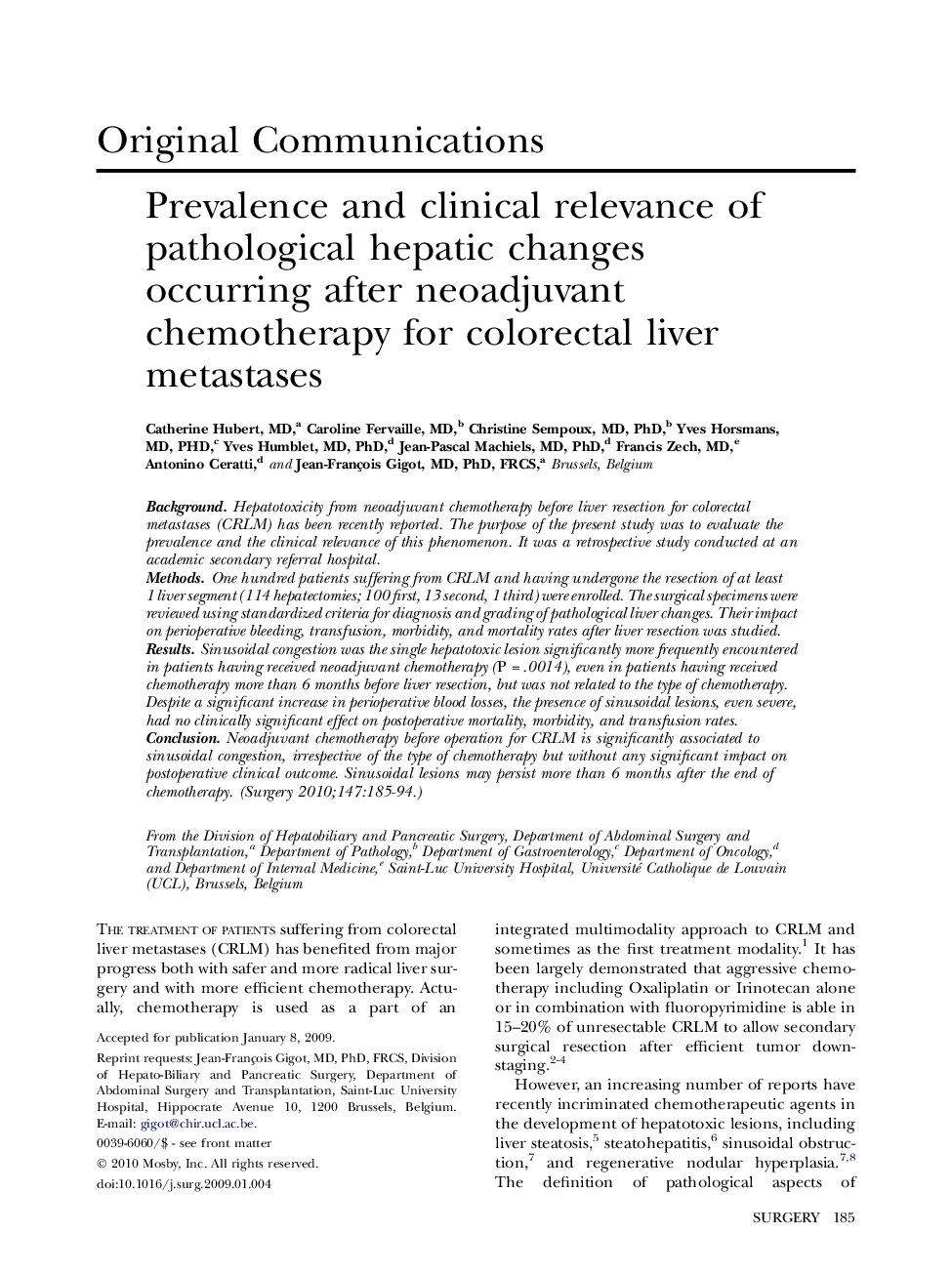| Article ID | Journal | Published Year | Pages | File Type |
|---|---|---|---|---|
| 4307998 | Surgery | 2010 | 10 Pages |
BackgroundHepatotoxicity from neoadjuvant chemotherapy before liver resection for colorectal metastases (CRLM) has been recently reported. The purpose of the present study was to evaluate the prevalence and the clinical relevance of this phenomenon. It was a retrospective study conducted at an academic secondary referral hospital.MethodsOne hundred patients suffering from CRLM and having undergone the resection of at least 1 liver segment (114 hepatectomies; 100 first, 13 second, 1 third) were enrolled. The surgical specimens were reviewed using standardized criteria for diagnosis and grading of pathological liver changes. Their impact on perioperative bleeding, transfusion, morbidity, and mortality rates after liver resection was studied.ResultsSinusoidal congestion was the single hepatotoxic lesion significantly more frequently encountered in patients having received neoadjuvant chemotherapy (P = .0014), even in patients having received chemotherapy more than 6 months before liver resection, but was not related to the type of chemotherapy. Despite a significant increase in perioperative blood losses, the presence of sinusoidal lesions, even severe, had no clinically significant effect on postoperative mortality, morbidity, and transfusion rates.ConclusionNeoadjuvant chemotherapy before operation for CRLM is significantly associated to sinusoidal congestion, irrespective of the type of chemotherapy but without any significant impact on postoperative clinical outcome. Sinusoidal lesions may persist more than 6 months after the end of chemotherapy.
